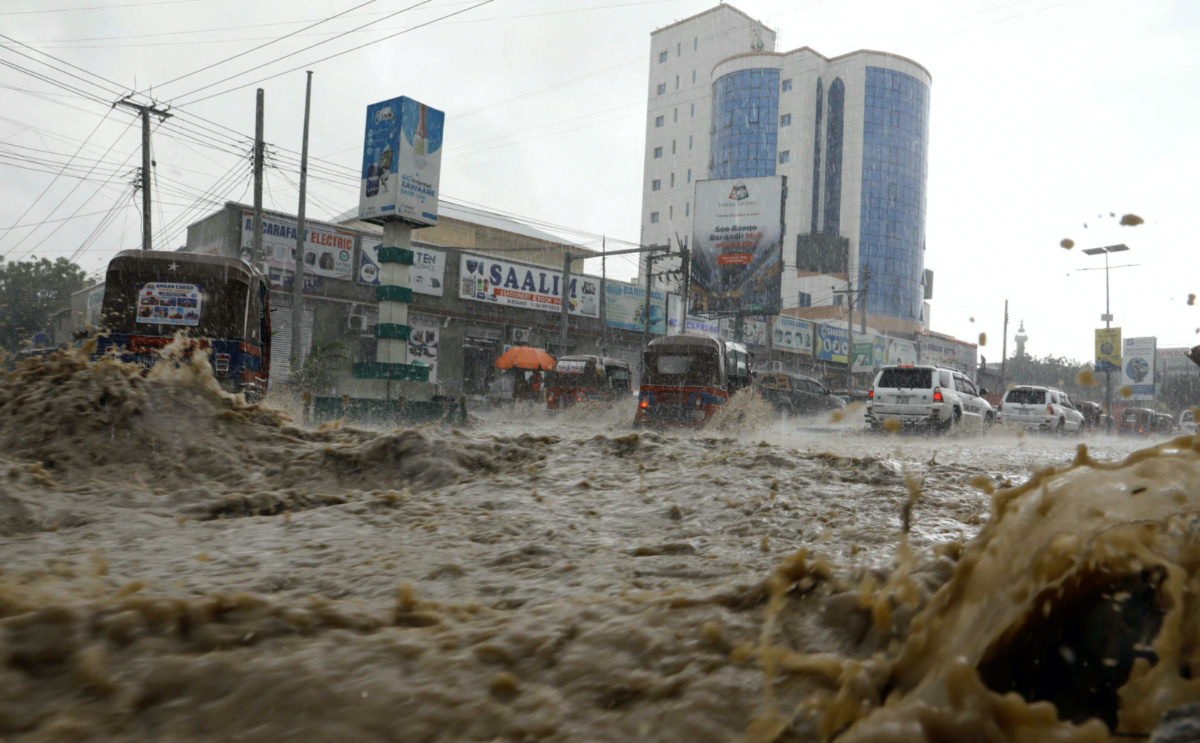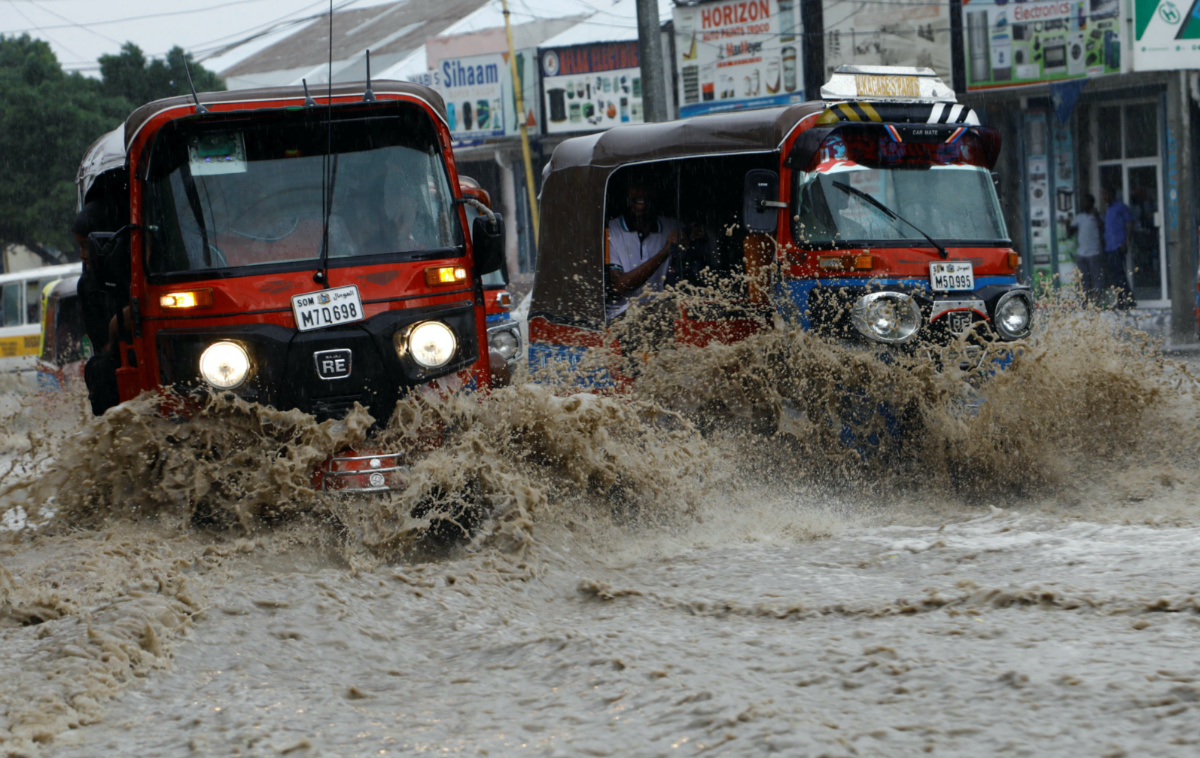Mogadishu, Somalia
Reuters
The worst flooding to hit Somalia in decades has killed 29 people and forced more than 300,000 to flee their homes, the National Disaster Management Agency said on Wednesday, following heavy rains that have inundated towns across East Africa.
Authorities have scrambled to rescue thousands of stranded people from the floodwater, which comes on the heels of the region’s worst drought in 40 years.

Motorists drive through a flooded street following heavy rains in Mogadishu, Somalia, on 8th November, 2023 PICTURE: Reuters/Feisal Omar
“What is going on today is the worst for decades. It is worse than even the 1997 floods,” said Hassan Isse, managing director of the Somali Disaster Management Agency (SOMDA).
The death toll and numbers of people displaced were likely to rise further, Isse said, because many people were trapped by floodwaters.
“I do not remember such floods in my life,” said Mohamed Farah, a local elder in Baidoa city, in southwest Somalia. “People keep on evacuating looking for high ground.”
At least 2,400 people have been cut off in Luuq town, where the Jubba River burst its banks, the United Nations has said.
“Luuq is surrounded by the river and floods are threatening us. People keep fleeing out of the town. Some are still trapped. Our shops have been washed away,” said Ahmed Nur, a trader in Luuq.
Floods in neighbouring Kenya have killed at least 15 people and submerged a bridge in Uganda, cutting off a road linking Kampala to oilfields in the northwest, the Kenya Red Cross and Uganda’s road authority said.
The regional deluge was caused by the combined effect of two weather phenomenons, El Niño and the Indian Ocean Dipole, said Nazanine Moshiri, a climate analyst at the International Crisis Group.

Rickshaw taxis drive through the flooded KM5 street following heavy rains in Mogadishu, Somalia, on 8th November, 2023. PICTURE: Reuters/Feisal Omar
El Niño and the Indian Ocean Dipole are climate patterns that impact ocean surface temperatures and cause above-average rainfall.
“The impact of the flooding is much worse because the soil is so damaged from an unprecedented recent drought – years of conflict and al-Shabaab militia’s presence also makes building flood defences and resilience more complex and costly,” Moshiri said.
Scientists say climate change is causing more intense and more frequent extreme weather events. In response, African leaders have proposed new global taxes and reforms to international financial institutions to help fund climate change action.
– With reporting by ELIAS BIRYABAREMA and HEREWARD HOLLAND






